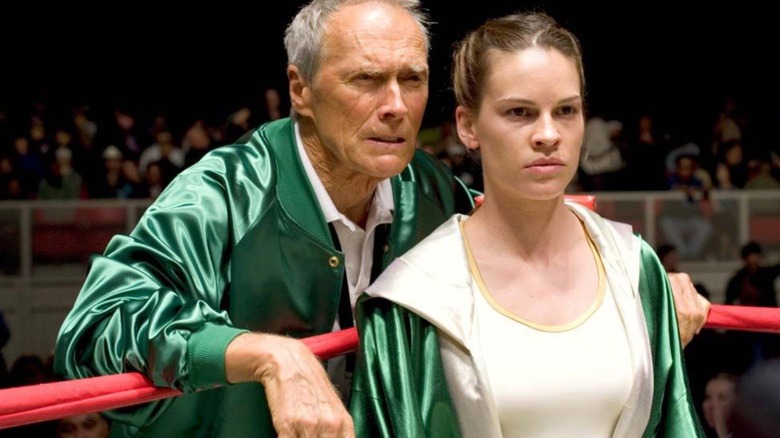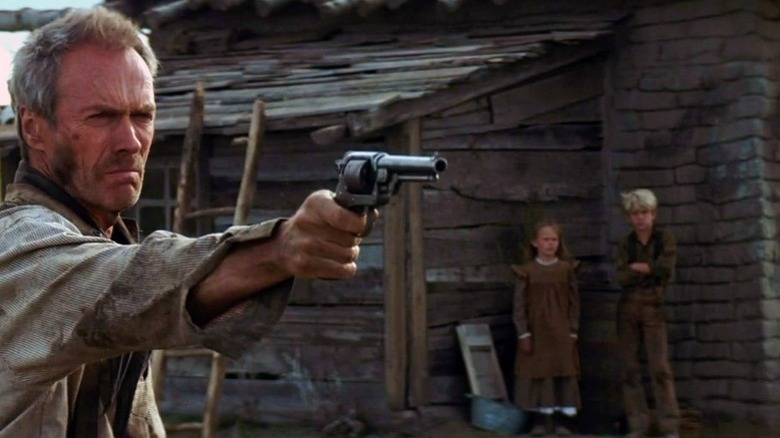One Of Clint Eastwood's Secrets To Directing Was Creating A Fun But Quiet Atmosphere On Set
Clint Eastwood is one of the few Hollywood stars whose legacy of filmmaking is just as celebrated as his acting career, perhaps even more so judging by the acclaim he received after spending time behind the camera. His extensive and prolific filmography points to a specific and unique directing style all of his own defined by his famously expeditious, workman-like way of carrying out a shoot. Despite the speedy pace of his productions, however, Eastwood reportedly also likes to maintain a calm, cool, and collected climate on set, keeping the general volume of the room low without resorting to disciplinary outbursts. It's a professional attitude that matches the minimalistic language and attitude of The Man With No Name himself.
Eastwood had been directing ever since 1971 when he bought his friend and collaborator Jo Heim's psychological thriller script "Play Misty for Me." As a director, he received praise from critics and earned his own circle of appreciators, but he wouldn't have a true critical success story in the mainstream until 1992 with the Academy Award-winning revisionist-Western "Unforgiven." Since then, Eastwood's works have consistently garnered attention as his more auteurist side came to light. Ironically, critics initially considered Eastwood's performances one-note as he talked through pursed lips and gritted teeth, but as the actor transitioned into a bona fide filmmaker, his ability to conjure powerful performances from his cast became known as one of his greatest assets.
When the bell doesn't toll
Clint Eastwood strives to create an organic atmosphere on set, where he wants to keep the formalities of rolling cameras down to a minimum. Somewhat shirking the traditional "lights, camera, action" routine, the director prefers to avoid making grand announcements to quiet down the set. He explained in an interview with DGA Quarterly:
I like an atmosphere that isn't loaded with tension. I don't like sets where people are yelling at each other. The thing I dislike the most is people going 'Sssh sssh sssh,' because they end up making more noise than the people they're trying to sssh. I remember after I started directing I was on a picture over at MGM, I walked out on the soundstage and all of a sudden I hear this huge bell ringing, which meant they were going to start the scene, and I thought, 'What is this s***?'
That doesn't mean that Eastwood's sets are cacophonous and chaotic, though. On the contrary, the filmmaker's approach to managing his cast and crew allows his sets a sort of relaxed organization partially inspired by a White House dinner he attended where Secret Service agents were quietly talking in their headpieces without disturbing anyone. One also has to wonder if his brisk style is in direct contrast to the highly fastidious Sergio Leone, who frustrated Eastwood with his insistence on multiple takes. Eastwood is also fond of candid takes in order to "get natural moments you wouldn't get when someone's screaming, 'Silence! Rolling! Action!'" It's a remarkably chill approach for someone so famous for his intensity and grit.

